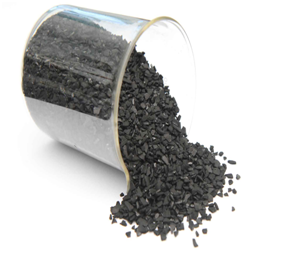Activated Carbon Media
Activated carbon media filter is effective in reducing certain organic chemicals and chlorine in water. It can also reduce the quantity of lead in water although most lead-reducing systems use another filter medium in addition to carbon. Water is passed through granular or block carbon material to reduce toxic compounds as well as harmless taste- and odor-producing chemicals. This fact sheet discusses the principles and processes of typical activated carbon Media filtration systems. People are increasingly concerned about contaminants in their drinking water that cannot be removed by water softeners or physical filtration. The reaction of chlorine with organic matter during the chlorination of drinking water can produce other compounds such as trihalomethanes as by-products, which may increase the risk of certain cancers. Radon, a radioactive decay product of natural uranium, can be found in groundwater as well as in the air of buildings and has been related to lung cancer.

Working Principle
Activated carbon Media filtration is an adsorptive process in which the contaminant is attracted to and adsorbed onto the surface of the carbon particles. The efficiency of the adsorption process is influenced by carbon characteristics (particle and pore size, surface area, density and hardness) and the contaminant characteristics.
